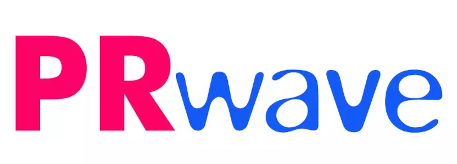A devastating Effect on Brand Loyalty
Common brand theory maintains that we build brands for the long-term and that Brand Equity results mainly, both directly and indirectly, from customer loyalty. More than 80% of the interviewees in the 2001 online survey of ‘best practices in brand management’ conducted by the consulting firm Prophet, chose customer loyalty as the most important factor influencing brand strength. Unfortunately, it seems that consumer loyalty (even loyalty to a consistent repertoire of brands) is a disappearing phenomenon.
Researchers at the Leo Burnett advertising agency published the results of a comprehensive research. During two years in the mid-nineties, they observed brands in the American market. The main findings were as follows:
- Most of the brands (60%) lost market-share.
- Only 15% of the brands enjoyed loyalty of the majority of their consumers (according to Leo Burnett’s Buyer Strategy Segmentation system).
The research utilized store scanner data for a combined panel of consumers of two leading research companies: Nielsen and Information Resources Inc. It encompassed 28,000 households. The research examined 1,251 brands of packaged goods of different 14 consumptions categories. Excluded were brands introduced to the market during these two years and brands discontinued.
According to data, accumulated by the management consulting firm Bain & Co. on average, US-based companies lose over half their customers every five years. I often hear estimates by senior executives that the rate of annual churn in categories like cellular phones and credit cards, in Europe and the USA, is about 25% of the customers. The Customer base of such a company changes every 3-4 years.
Oddly, customer satisfaction has little to do with it. Customer satisfaction is no guarantee of customer loyalty. Moreover, retention rate does not seem to improve even when utmost attention is given to customer satisfaction. A study of 20 companies that scored well in the 1988 and 1989 federally sponsored annual Malcolm Baldrige National Quality Award competition, showed that satisfaction increased yet retention levels remained the same or actually decreased. Bain & Co. found that only 40% of Satisfied to Very Satisfied customers are generally retained and that 60 – 80% of customers who defected had said on survey just prior to defecting that they were Satisfied to Very Satisfied. In a study by the consulting firm Juran Institute, out of 200 large US-based corporations, only 4 (!) were able to show that the improvement in satisfaction achieved by their programs actually increased sales or profits.
The above trend is only a partial description of the current situation. Simultaneously the continuing strength of established mega-brands is evident. Global Brands – Such as McDonald’s, Nescafe, Nike, Microsoft, Sony and others – unite consumers’ way of life worldwide. Nonetheless, Landor and Interbrand show repeatedly that most of the brands occupying positions in the top 100 list have been there for at least 25-50 years, suggesting that mega-brands are becoming a rather exclusive club. It seems that creating even modest Long-Term Brands, has become more difficult and the chances of success have been reduced.
FoMO has changed consumers
There has been a fundamental change in consumers’ preferences and behavior. There is now, an unprecedented openness to try, both new products and new brands manifested in a sweeping preference of brand variety and novelty over brand loyalty. This change interacts with the factors described above together creating the new situation in the market place.
An Israeli survey I conducted in February 1999 demonstrates the following preferences:
- 54% think that whoever does not try new products is ‘out of touch’.
- 58% like to try new products often.
- 64% think that whoever does not try new products loses.
Most consumers use the terms ‘product’ and ‘brand’ interchangeably.
Much of my data originates in the Israeli market. Is such data relevant for other countries as well? Repeatedly, comparisons between Israeli data and data from the US and from western European countries, demonstrated that the Israeli consumer is very similar to consumers in other developed economies in terms of demographic and socio-economic distributions, general lifestyles and attitudes, brandscape, available retail formats, consumption patterns, buying behavior and brand affinity. Recently, multinational companies such as Gillette have started using Israel for market test of new products.
An additional survey I conducted in January 2001 further evidences considerable level of acceptance (Completely Agree and Tend to Agree’) of statements expressing willingness to try new products. This survey also unearthed a new pattern of collecting product information continuously rather than when contemplating purchase, motivated by Social benefits stemming from being up to date on such matters. For instance:
- ‘New products are often a conversation item with friends and family’ – 75%.
- ‘I keep abreast of new product introductions even without any specific intention to purchase’ – 70%.
- ‘I like trying new products’ – 66%.
Consumer loyalty, discussed above, is weakening, because consumers constantly move on to new products and brands. This is evidenced by the rapid diffusion of new products and brands. Ironically, as a result, nowadays marketers often experience nowadays a delusory ease in launching new brands and success stories are amplifying the interest of the business community in brands. "A process that once took decades now gets done in a few years", wrote Court, Forsyth, Kelly and Loch of the consulting firm McKinsey summing up the findings of a research program in which they interviewed 5,000 consumers and covered 130 brands. "Our research reveals that an average retail lifecycle fell from 12 years in the 1970s to 5 years by the early 1990s". Following are some examples from the Israeli market corroborating these conclusions.
‘Actimel’, Danone’s probiotic yogurt drink, was introduced into the Israeli market in December 1998. A survey performed the same month showed that about 15% of the adult population tried the product within a few weeks.
In the coffee category, in which the consumer is assumed to have lasting preferences, 44% of the instant coffee drinkers have tried Elite’s (Israel’s leading manufacturer of sweet food products and coffee) new ‘Aroma’ brand within five months of its launching in February 1999.
Whoever thinks these swift and sweeping changes are unique to the food market should consider the almost immediate entry of Gaba’s ‘Meridol’ toothpaste to the 19th place on the financial rating of non-food brands’ sales in 1998 according to Nielsen Israel. Meridol is now the second most popular toothpaste brand, after Colgate, in a category renowned in the past for its stability due to consumers’ firm habits.
‘Strong umbrella brands’ may often be an optical illusion. A survey I conducted in August 1999 suggests that 58% tend to try yogurt with fruit in new flavors introduced under the brand names Danone and Emmi, at least from time to time. 81% of them stated they would have tried such new products even if marketed under different brand names. They constitute 92% of those who try new yogurt with fruit flavors Usually or Always (those who try Usually or Always – 33%). These findings are consistent with Nielsen’s evidence from other countries as well, that umbrella names have little influence on the success of new products.
In December 2001, Yoplait entered the Israeli market launching their yogurt with fruit up against Danone, a strong market leader enjoying 67% market share. Within one week (!) 47% of all buyers tried the newcomer (totally unknown previously to the Israeli consumer). Six months later, Yoplait had over 50% market share. The diet product line was introduced to the market in June 2002. It reached a 41% market share in the sub-category during the first week.
How about more durable and costly products?
South Korean cars were introduced to the Israeli market in the mid-1990s. In just two years, their combined market share was more than 15%. In 1999, Hyundai was the second best selling brand of family cars and most of these brands did quite well. Examples are ample in most, if not all, consumer goods and service categories.
Seth Godin agrees. In his ‘Unleashing the Ideavirus’, Godin observes that: "It took 40 years for the radio to have ten million users. … It took 15 years for TV to have ten million users. It only took 3 years for Netscape to get to 10 millions, and it took hotmail and Napster less than a year". He concludes: "While early adopters (the nerds who always want to know about cool things in their field) have always existed, now we’ve got more nerds than ever".
Another aspect of the tendency towards new products and brands is ‘The Replacement Cycle’ defined as "The rate at which customers replace their products/brands". I would like to emphasize that while technological improvements often drive replacement cycles in industries such as personal computers and wireless handsets, these cycles are also affected to a considerable degree by a socio-psychological factor relevant to other industries as well: the feeling that ‘it is time to move on’. Social approval resulting from the rapid market penetration accelerates the process, at least for "network goods" where the total benefit that a consumer derives increases with the number of consumers who buy it.
{mosloadposition user10}


